


Miniature lightning in a flash tube
This is a very nice experiment, which can be performed without any risk of injury, and which does not require any expensive apparatus. This makes the experiment especially very attractive. The only special item, needed for this experiment is a U-shaped xenon flash tube, such as it is used in certain medium-sized photography flash units. Such tubes can be purchased at electronics parts stores for approximately $5, but using the tube from an old photography flash unit also is an option. With a kitchen piezo gas-lighter, one can create remarkable sparks inside such a flash tube.
![]()
Required equipment:
- piezo gas lighter
- xenon flash tube, preferrably U-shaped
- two wires with a pair of isolated crocodile clamps at each end
Safety:
- The sparks from the piezo gas lighter can give unpleasant shocks. They are not really dangerous, but they definitely are unpleasant.
![]()
Setup of the experiment
This experiment is extremely simple to setup. At the tip of the gas lighter, there are two electrodes, between which there is a spark, when the button is pressed. Connect a wire to each of the electrodes. The xenon flash tube must be connected between the other ends of the two wires. The picture below shows the setup, needed for this experiment.
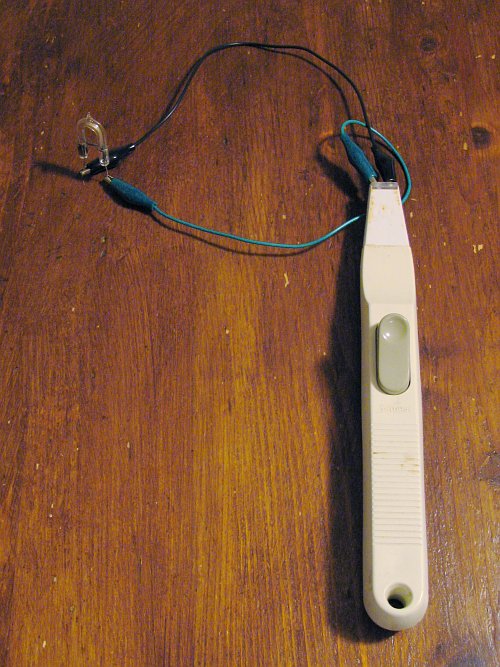
Performing the experiment
Performing the experiment also is very simple. Simply press the button of the gas lighter. When this is done, long sparks (length of sparks is 4 to 5 cm) are produced inside the flash tube.
Below, some pictures of sparks inside the tube are shown. Frame 1 shows a short-lasting spark. Frames 2, 3, 4 show a longer lasting spark. These three pictures are made with an interval of 33 ms between each of them. These three pictures nicely show how an existing shape of spark is sustained for a somewhat longer period of time.
1
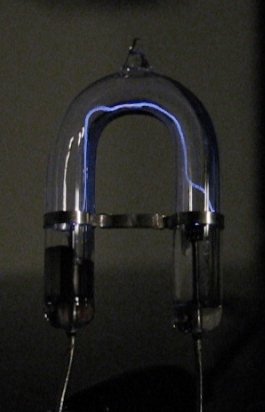 2
2
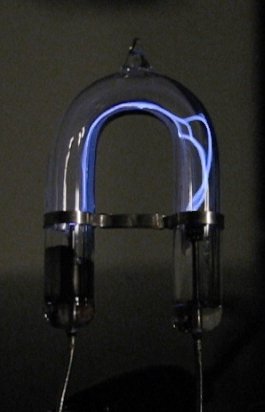
3
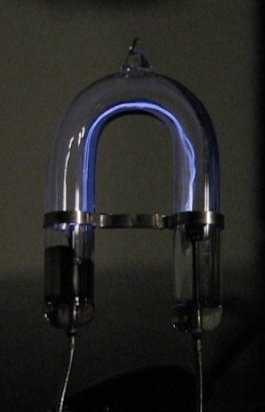 4
4
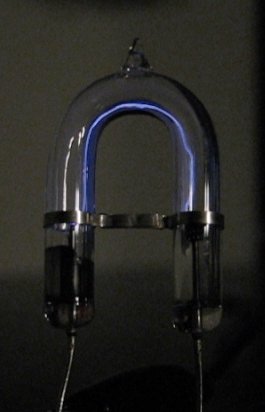
The experiment also was done in a well-lit room. Even with good light, the sparks can be seen very clearly. There is, however, quite some difference between sparks, some are much more brighter than others.
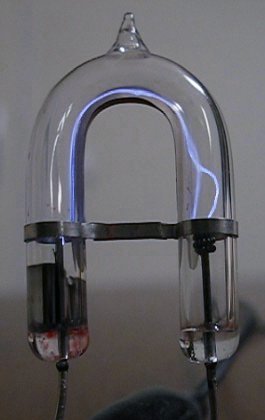
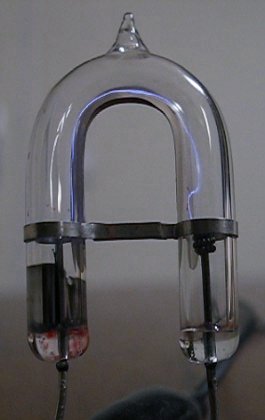
Click here for an animation of the lightning effect. The file size is approximately 1 MByte. Another animation of lightning in the dark is present here. The size of that file also is approximately 1 MByte.
![]()
Discussion of results
The piezo electric gas lighters use a button, made of a special material, which has the property, that if it is deformed, then a charge separation occurs, resulting in a high voltage between its two sides. On the other hand, when a high voltage is applied between the two sides of a button of such a material, then it is deformed (this is used in some simple piezo-buzzers, where an alternating voltage is applied on both sides of a disk of this material, resulting in a buzz).
The charge separation in the kitchen gas lighters results in a voltage difference between the two plates of the piezo electric button of several kilovolts. This is sufficient to produce a spark of a few mm between the two electrodes at the tip of the gas lighter. The sparks are not powerful, but they are sufficiently hot in a very small volume to ignite an air/gas mixture.
The high voltage can also be applied between the electrodes of a flash tube. A flash tube contains a gas (usually xenon) at very low pressure. Due to this low pressure, the breakdown electrical field strength is much lower than in air. For air, the breakdown field strength is between 1 kV and 3 kV per mm, depending on the electrode size and shape. For the low pressure gas inside such a tube, the breakdown field strength only is between 50 and 100 V per mm. So, with a tube of a length of a few cm, a voltage of a few kV is sufficient to create a spark.